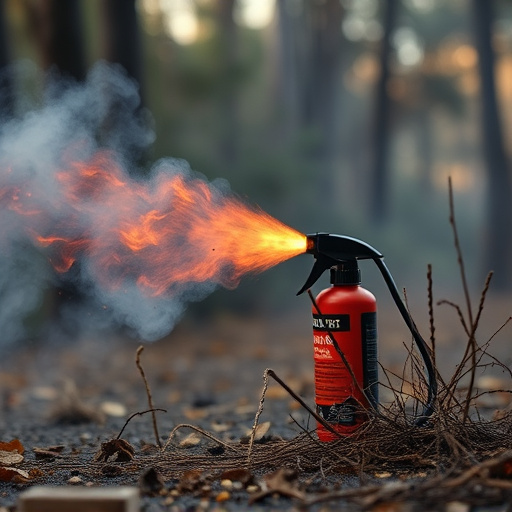Wildfire pepper spray, a specialized tool for law enforcement, combines potent capsaicin with fire-resistant agents to counteract intense heat and smoke. Its effectiveness against the eyes, nose, and respiratory system aids in subduing individuals during wildfires, enhancing safety for both officers and civilians. This non-lethal technology allows agencies to monitor crowds, identify threats, and neutralize subjects swiftly, making it a valuable asset in high-risk operations like wildfire scenarios. Adoption requires rigorous training on target acquisition and de-escalation, as well as understanding local laws regarding deployment to ensure safe and legal integration into law enforcement practices.
“In recent years, wildfire pepper spray has emerged as a unique tool in law enforcement strategies, particularly during high-risk operations. This article explores the multifaceted use of wildfire pepper spray, focusing on its composition and effectiveness as a surveillance asset. We delve into how it enhances situational awareness during wildfires, while also examining crucial considerations for law enforcement agencies, including safety protocols, training requirements, and legal frameworks. Discover the potential game-changing role of this specialized product in navigating challenging environments.”
Understanding Wildfire Pepper Spray: Composition and Effectiveness
Wildfire pepper spray is a specialized law enforcement tool designed for surveillance and control during wildland fires or in rugged, challenging terrain. Unlike traditional pepper spray, this advanced formula is tailored to withstand extreme conditions. It’s composed of potent capsaicinoids, often derived from chili peppers, mixed with fire-resistant agents to ensure its effectiveness remains intact even under intense heat and smoke.
The composition plays a crucial role in its effectiveness. The spray creates a temporary but powerful incapacitation effect by irritates the eyes, nose, and respiratory system of the target, leading to momentary blindness, difficulty breathing, and intense pain. This allows law enforcement officers to control and subdue individuals who might otherwise pose a danger during wildfire situations. Its specialized design makes wildfire pepper spray a game-changer in surveillance operations, ensuring the safety of both personnel and civilians.
Surveillance Applications: Utilizing Pepper Spray for Situational Awareness
In the realm of law enforcement, maintaining situational awareness is paramount for ensuring public safety during high-risk operations, especially in challenging environments like wildfires. Wildfire pepper spray emerges as a versatile tool that enhances surveillance capabilities by providing a non-lethal means to control and assess situations swiftly. This innovative solution enables officers to quickly disrupt and contain potential threats, allowing them to gather intelligence and make informed decisions from a safe distance.
By deploying wildfire pepper spray, law enforcement agencies can gain crucial insights into suspicious activities without endangering their personnel. The effective range and temporary blindness induced by the spray offer a strategic advantage in monitoring and controlling crowds, identifying hidden individuals, or neutralizing hostile subjects. This technology serves as a game-changer for surveillance operations, fostering a safer and more efficient approach to maintaining public order during wildfire events or other crisis situations.
Law Enforcement Considerations: Safety, Training, and Legal Implications
Law enforcement agencies considering the adoption of wildfire pepper spray must weigh several critical factors, primarily focusing on safety and effectiveness. The use of such spray in close-quarters, high-stress situations necessitates rigorous training to ensure officers understand its capabilities and limitations. This includes proficiency in target acquisition, understanding de-escalation tactics, and recognizing when the use of force is justified. Moreover, legal implications cannot be overlooked; a thorough grasp of local laws regarding pepper spray deployment, including restrictions on usage, consent, and potential exemptions for exigent circumstances, is paramount to mitigate liability risks.
